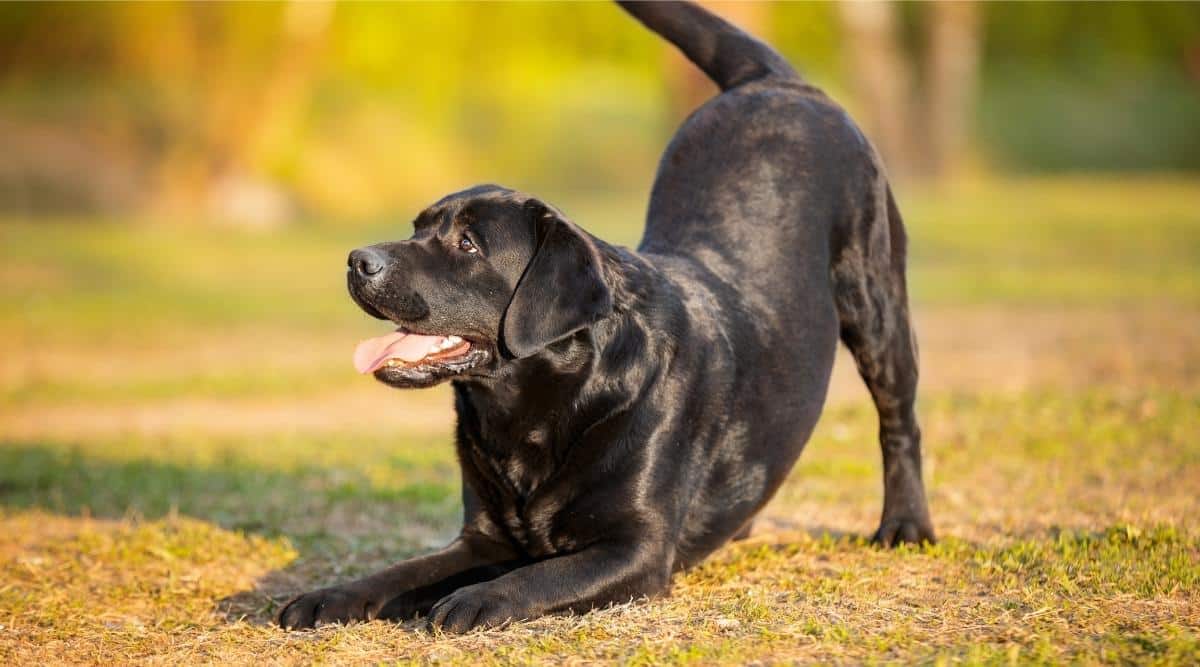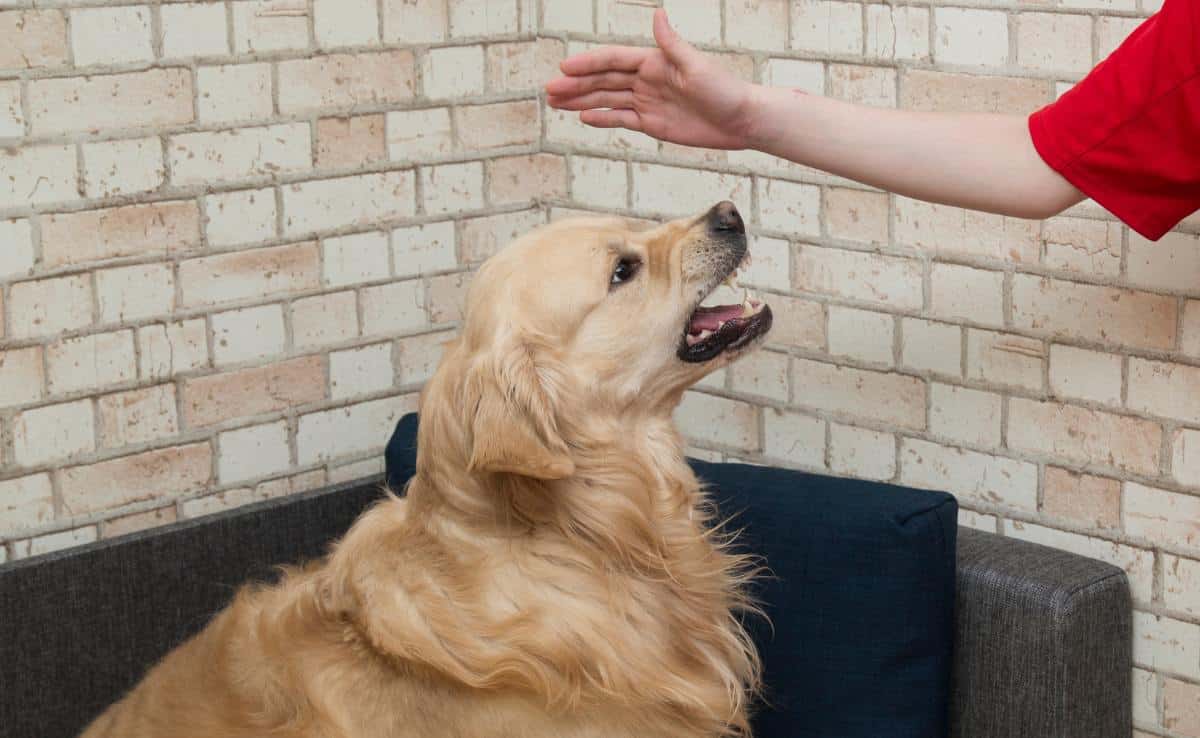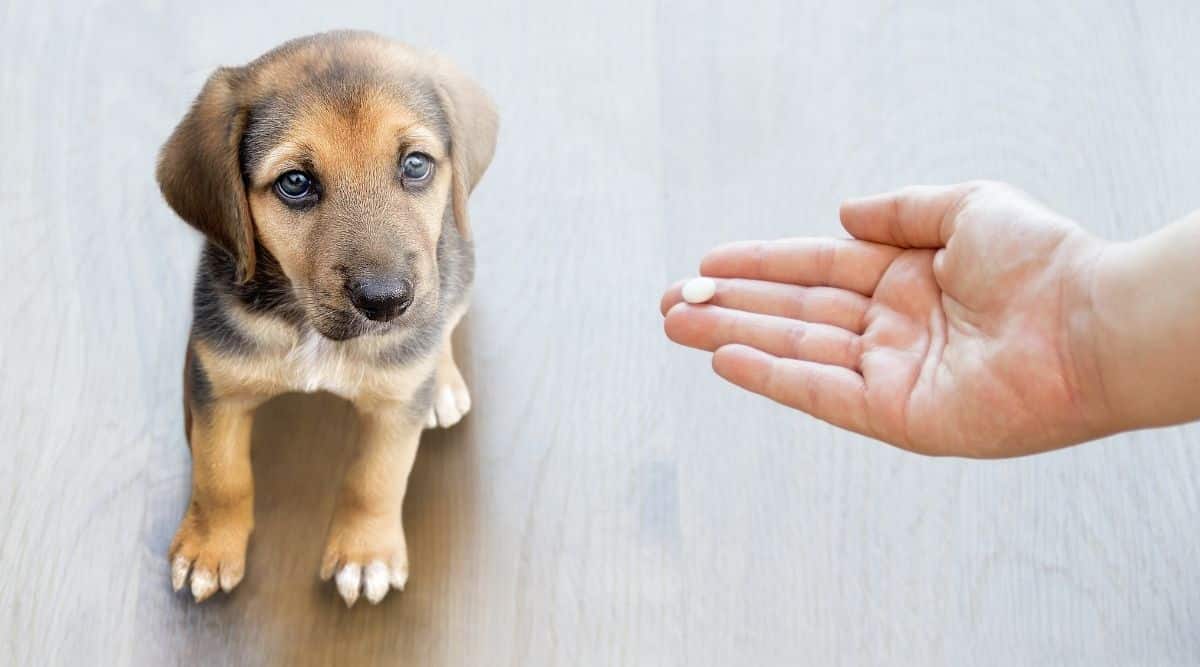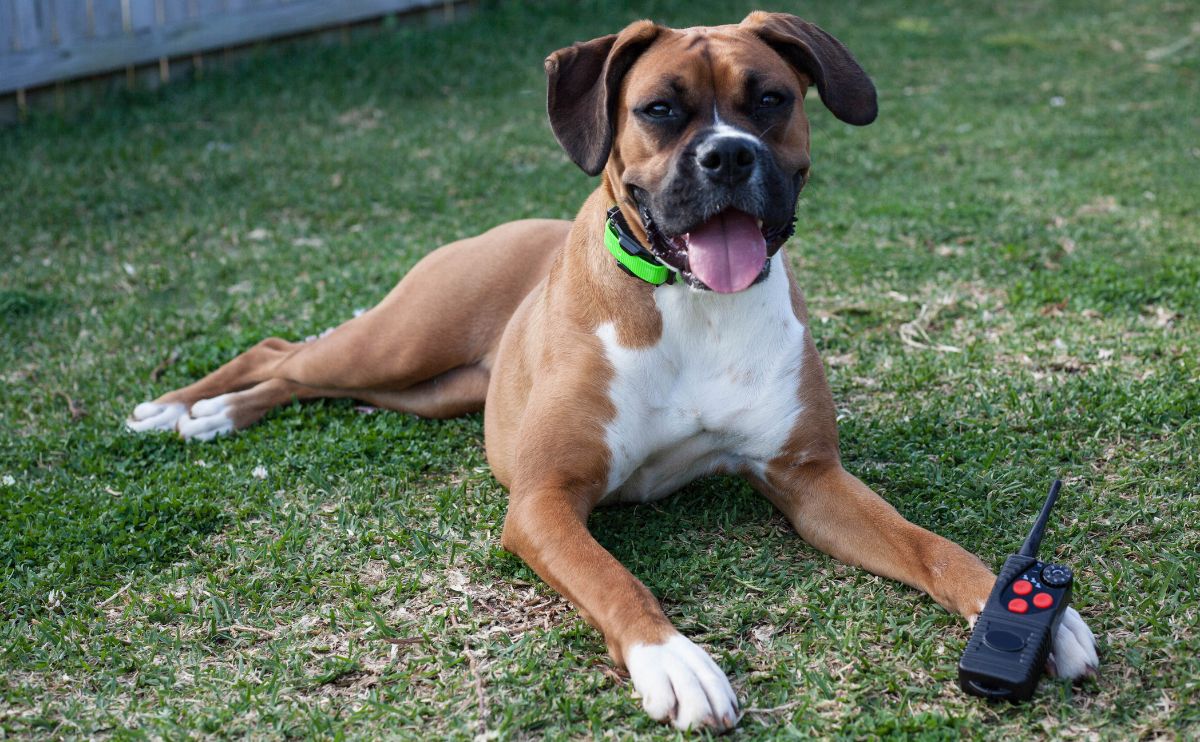How To Teach Your Dog To Fetch: A Step-By-Step Guide
When you purchase through links on our site, we may earn a commission. Here’s how it works.
While some dogs, especially retrievers, may instinctively play fetch with little or no training, not all dogs grasp the concept as quickly. But the good news is you can teach almost any dog to fetch. While it can take some time and patience for some dogs to catch on, fetch is one of the best games you and your pup can play together. We’ll give you a step-by-step tutorial on how to teach your dog to fetch, tips if you hit roadblocks, and much more.
Table of Contents
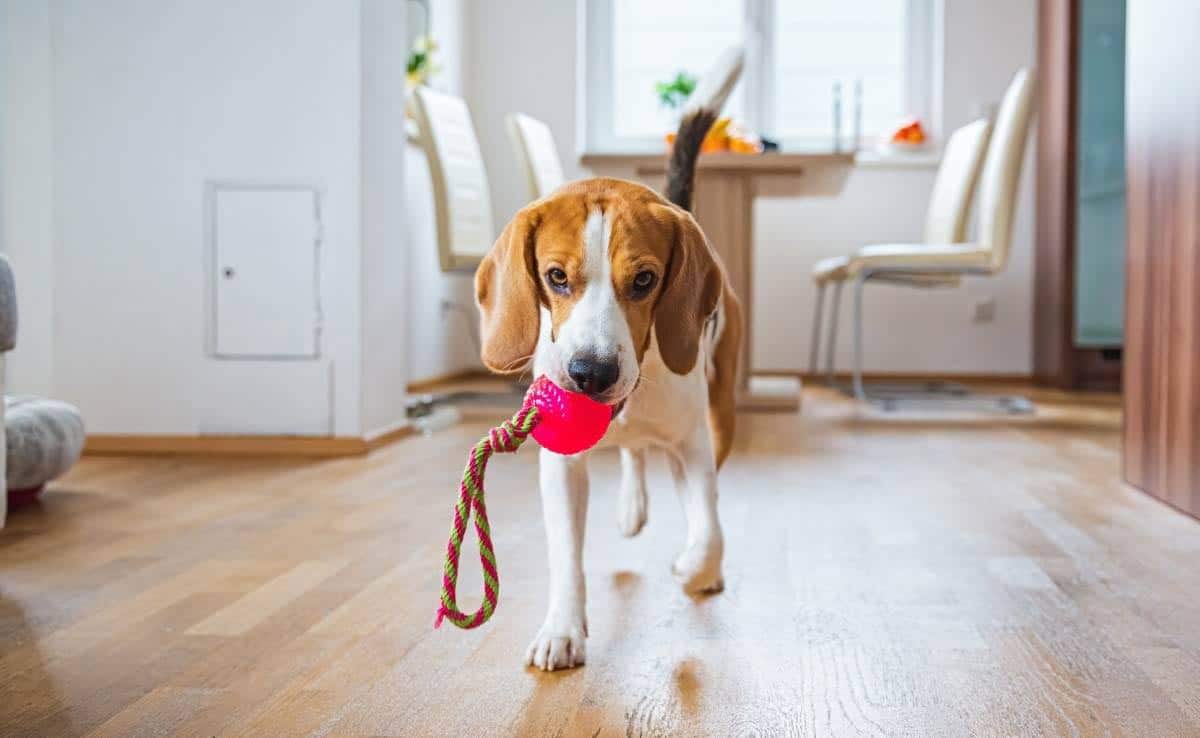
Before You Begin Training
First, make sure you have the “tools” on hand that you’ll need to begin training:
- Your dog’s favorite toy or ball
- Small training treats (we recommend Zuke’s Mini Naturals)
- Your clicker if you’re teaching fetch with a clicker (learn more about clicker training)
It’s also important to keep a few things in mind while you’re teaching your dog fetch. Training will go much smoother and faster if your puppy or dog already knows basic obedience commands, most importantly “sit” and “drop it.”
You’ll also need a lot of patience and be sure to use positive reinforcement, giving your dog a lot of enthusiastic praise. Never use a harsh voice, negative body language, or any type of punishment if your dog isn’t getting the hang of it. These techniques can have detrimental effects on your furry friend.
How To Train A Dog To Fetch: Step-By-Step
It’s a good idea to train in a small, enclosed space with limited distractions. This helps your dog focus and reduces the space where he could run away with his toy. Once you’ve mastered your game, you can move it outdoors and eventually to the dog park. It’s also wise to limit your training sessions to 10-15 minutes (shorter for puppies) per day.
1. Get Your Dog Interested In The Toy
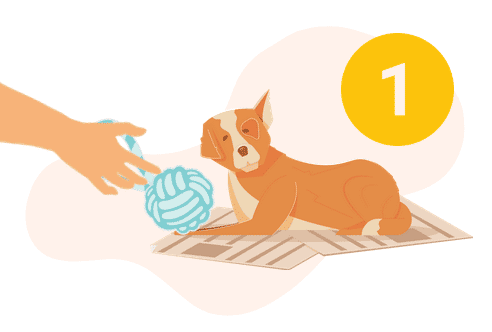
For dogs who are naturally toy-driven, this step may be completely unnecessary. But some dogs need enticement to get excited about a toy.
- Sit near your pup and excitedly move the toy around to get his attention. You may need to roll it around or toss it to bump up the fun factor.
- If he grabs it give him praise/click and a treat.
- Let him chew on it for a little while, then toss another treat in front of him so he lets go of the toy to eat the treat.
- Repeat if needed until you think your pup is excited about the toy.
Expert Tip: If your furry friend isn’t showing much interest in a particular toy, try another type. Some dogs prefer balls, while others love squeaky plush toys or rope toys.
2. Teach Your Dog The “Drop It” Command
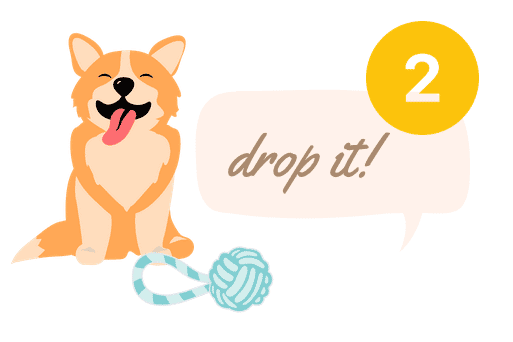
Although dropping the toy is the last step in the fetch game, this is an excellent time to master the “take it” and “drop it” commands, which can be difficult for some dogs to grasp.
- Wave the toy in front of your dog’s face until he’s interested.
- Tell your dog “take it” and let him grab the toy from your hand.
- Wait a few seconds and say “drop it.” You’ll need to hold a treat near your dog’s nose to get him to drop the toy.
- When your pup drops the toy, immediately give him the treat and praise/click.
- Repeat until you know your dog will drop the toy once he sees the treat in your hand.
- Then you can move on to giving your command without showing your dog a treat. If he drops the toy, give him a treat from your pocket and praise/click.
- If your dog doesn’t drop the toy without seeing the treat, give your command, wait a couple of seconds, and then show the treat.
- Gradually increase the time between your command and showing your dog the treat until your pup catches on that he has to drop the item before any sign of treats.
- Eventually, your dog should learn to drop the toy without getting a treat.
Expert Tip: Slowly increase the time your dog holds the toy until you say “drop it.” This helps him understand that it’s okay to hold the toy for a longer period of time.
3. Make Your Dog Chase The Toy
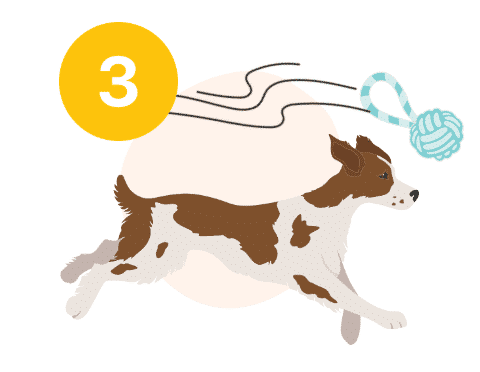
Most dogs will instinctively chase after a ball or toy, but some need a bit of encouragement. Start by throwing the toy a short distance. You may need to run along with your pup toward the toy at first to get him to understand how fun chasing it is. Work on this until your dog chases on his own, slowly increasing the distance you throw the toy.
4. Condition Your Dog To Bring The Toy Back
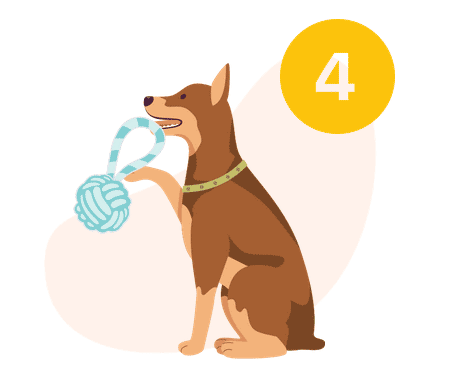
This step is often the most difficult part of training fetch. Be patient. It can take a while for dogs to understand what they’re supposed to do. It may take even more time for you to figure out how to train a puppy to bring a ball back.
- Throw the toy a short distance. Your pup may instinctively pick it up, or you may need to give him the “take it” command until he understands that he needs to grab it. Repeat this if needed.
- As soon as your dog grabs the toy, call him back to you using a cue like “bring” or “come.” You may need to excitedly wave your arms toward you while you walk backward away from your dog.
- Once your pup returns to you with the toy, give your “drop it” command, and give him lots of praise/click and treats.
- Tell your dog to sit so he doesn’t jump up on you to get the toy.
- Repeat until your dog has consistently learned your return cue. He should eventually catch on because he knows he’ll get rewarded when he brings his toy back.
Expert Tip: Some dogs respond well if you lean over or kneel down to your dog’s eye level when you’re encouraging them to return.
Troubleshooting Common Problems
Some dogs take a long time to understand what’s expected of them with this game. Here are some tips on how to handle common problems when you’re teaching your dog fetch.
If Your Dog Tries To Play Chase
Dogs love a good game of chase, but they need to learn that fetch isn’t the time. What do you do if you throw your toy and he picks it up and runs away with it? Immediately turn your back to your dog and start walking away. This gesture may be enough for your dog to run back to you with his toy to get your attention. If he doesn’t return, stop playing and try again later.
If Your Dog Won’t Bring The Toy Back
Two of the most common problems with fetch are: 1) your dog won’t return the toy, or 2) your dog drops the toy on his way back to you. One of the best methods to work on these problems is by using two toys or a toy and treats.
- Have two toys on hand but only show your dog that you have one.
- Throw one toy.
- After your dog picks it up (but won’t return it), show him that you have another toy.
- Ideally, your pup will want to return to get the second toy.
- You can also try this approach using treats instead of a second toy.
- Eventually, your pup should learn that there’s a reward for returning the toy to you and will begin automatically doing so. Then you can wean off the second toy or treats.
What If My Dog Doesn’t Like Fetch?
Before giving up, try different types of toys. It could be that your dog isn’t into some toys. But if that doesn’t work, don’t worry if you’ve tried everything you can to get your dog to play fetch. You’re not a failure as a pet parent, and there’s nothing wrong with your pup. Some dogs don’t care about playing with toys.
Even dogs with a toy drive may simply have no interest in fetch. And that’s okay. Sure, it’s a fun way to interact with your furry friend and for him to get exercise, but sometimes it’s not for every dog. You can continue to play a two-toy fetch game if he enjoys that, or try other ways to play with your pup.
Best Fetch Toys
While many dogs love playing fetch with any kind of toy, you may have a picky pup. If your dog isn’t into fetch with what you’ve been using, you may want to try alternatives that could kick up the fun factor. Or if your canine companion is a fetch fanatic, he’ll likely love these toys. Here are some of the most popular fetch toys that we highly recommend.
- Best Ball: Chuckit! Ultra Ball (plus Chuckit! Launchers)
- Best Squeaky Toy: Best Pet Supplies 2-in-1 Stuffless Squeaky Dog Toys
- Best Rope Toy: Mammoth Flossy Chews Rope Tug
- Best Stick: West Paw Zwig Dog Fetching Stick
- Best Frisbee: KONG Rubber Flying Disc
- Best Floating Fetch Toy: ChuckIt! Amphibious
How To Train A Dog To Fetch A Beer (Video)
Now that you know how to play fetch with your dog, you can up the ante. One of the best (and funniest) tricks you can teach your canine helper is how to fetch you a beer or another drink from your fridge. This video shows you the basic steps, and it seems pretty easy. You may want to start training with an empty beer can in case your pup chomps down too hard at first!
Do You Need Help With Training?
If you’re having difficulty training your pup with new skills or if he’s having specific behavior issues, you may want to consider an online dog training course or a dog training app to get affordable assistance from professional dog trainers. The best options include step-by-step classes on everything from teaching your pup fun tricks and basic commands, like stay and leave it, to correcting leash pulling, aggression, and other problems. Some even give you virtual access to certified trainers.
